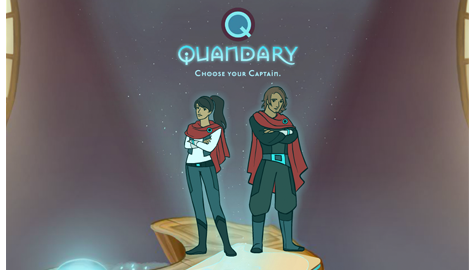Taking games to a whole new level. Serious games- games that can have you in
control of the serious things in life.
Making you the Captain, the decision maker. The gamer has to follow the
facts to get to the solution to life problems.
As leader one has to weigh out major societal needs and worries food,
disease, water, shelter and more while playing Serious Games. After
playing Quandry at least three times and testing out different solutions for
each problem faced I really started seeing how great this could be for
kids.
Not
only is the story line fantastic with a sci-fi theme the problem solving method that is used only increases the fiero as it enhances the game as each problem is solved. As Captain one has to
sort out through the facts, solutions and opinions of the settlers to make a proposal
to the council. Presenting the best
information to the council is very important in that the council will use the
information to come up with a solution.
With the wrong or incomplete information is provided to the council the solution may not fit the problem as well as
the Captain would have hoped.
As an
ESL teacher I could assess the students by how many points they receive as they
go through the game to see if they are really understanding the material which
is being presented. As the captain goes
through the game points are given as the solution comes together. Sheep attacks, water parasites, or arguments
that take on a life of their own such as perceived favoritism all are problems that
the captain must solve to keep life on Braxos moving forward. Problem solving is really key in this
game. As a teacher I could prompt
discussion analyzing the different ways each student tried to solve the problem
and what the results were of each solution and why they chose that solution over another.
The
reading and understanding in this game is a large part of this game and
therefore pushes the ESL student to practice the English language at a higher
level. ESL 1.1 criteria will be being met while working through this activity.



